- About MAA
- Membership
- MAA Publications
- Periodicals
- Blogs
- MAA Book Series
- MAA Press (an imprint of the AMS)
- MAA Notes
- MAA Reviews
- Mathematical Communication
- Information for Libraries
- Author Resources
- Advertise with MAA
- Meetings
- Competitions
- Programs
- Communities
- MAA Sections
- SIGMAA
- MAA Connect
- Students
- MAA Awards
- Awards Booklets
- Writing Awards
- Teaching Awards
- Service Awards
- Research Awards
- Lecture Awards
- Putnam Competition Individual and Team Winners
- D. E. Shaw Group AMC 8 Awards & Certificates
- Maryam Mirzakhani AMC 10 A Awards & Certificates
- Two Sigma AMC 10 B Awards & Certificates
- Jane Street AMC 12 A Awards & Certificates
- Akamai AMC 12 B Awards & Certificates
- High School Teachers
- News
You are here
Mathematical Treasure: Kircher’s Arithmologia
Athanasius Kircher (1601–1680) was born in Germany. Ordained a Jesuit priest in 1628, he taught at the Roman College for 40 years. His reputation as a polymath is well-deserved given his wide-ranging interests, which included antiquity, astronomy, biology, China, Egypt, faith, geology, language, mathematics, medicine, and more. He published more than 40 books on a wide variety of topics and over 2000 of his letters and manuscripts survive.[1] Although his reputation waxed and waned, according to Findlen, “Kircher was a source of inspiration for a great deal of interesting work in the 17th and 18th centuries,” including “virtually every major scientific, linguistic, and historical project on which [Euler] embarked” [Findlen 2004, pp. 8–9].
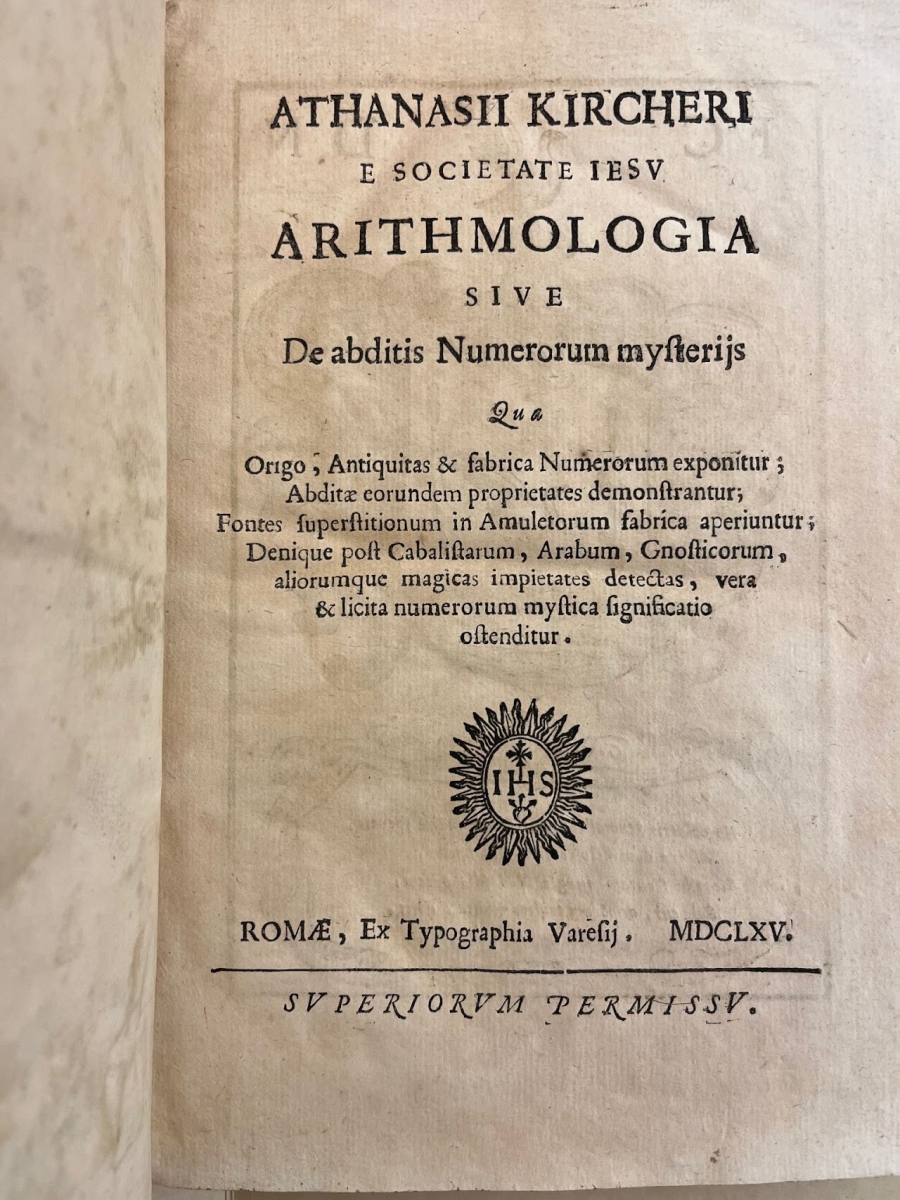
In Kircher’s Arithmologia sive De abditis Numerorum mysteriis (1665), religious mysticism is paired with mathematics starting on the frontispiece. Merrill explains that “Kircher did not accept the mysticism uncritically, however. Indeed, much of [Arithmologia] is dedicated to discrediting common superstitions about numbers” [Merrill 1989, p. 46]. Mathematical elements in the frontispiece include a 3x3 magic square, a scholar pointing a compass to a depiction of a 3-4-5 right triangle that demonstrates a particular case of the Pythagorean theorem, and a list of the positive integers 1, 2, 3, 4.
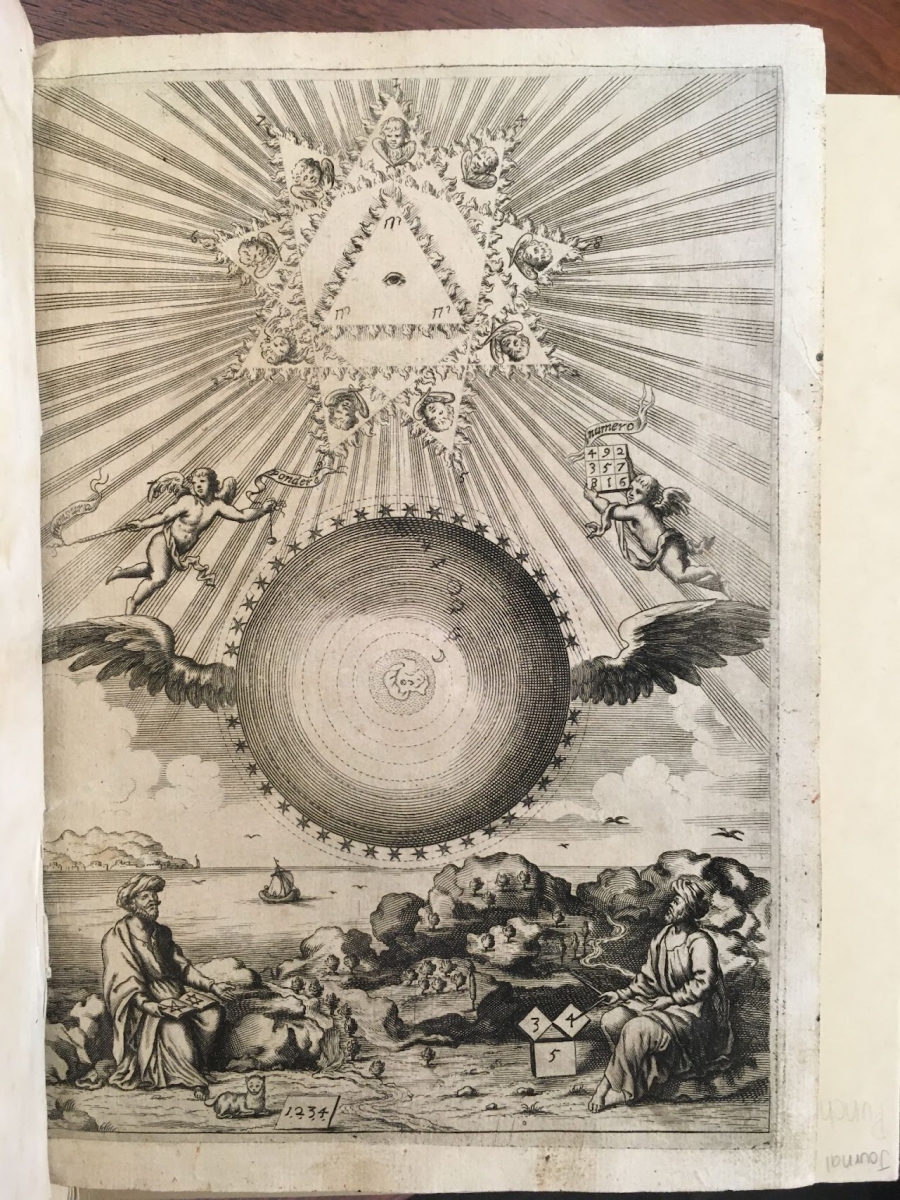
Written primarily in Latin, Arithmologia also contains Arabic, Egyptian Coptic, Greek, Hebrew, Roman and Syrian elements. A fold-out plate compares diverse numeration systems.
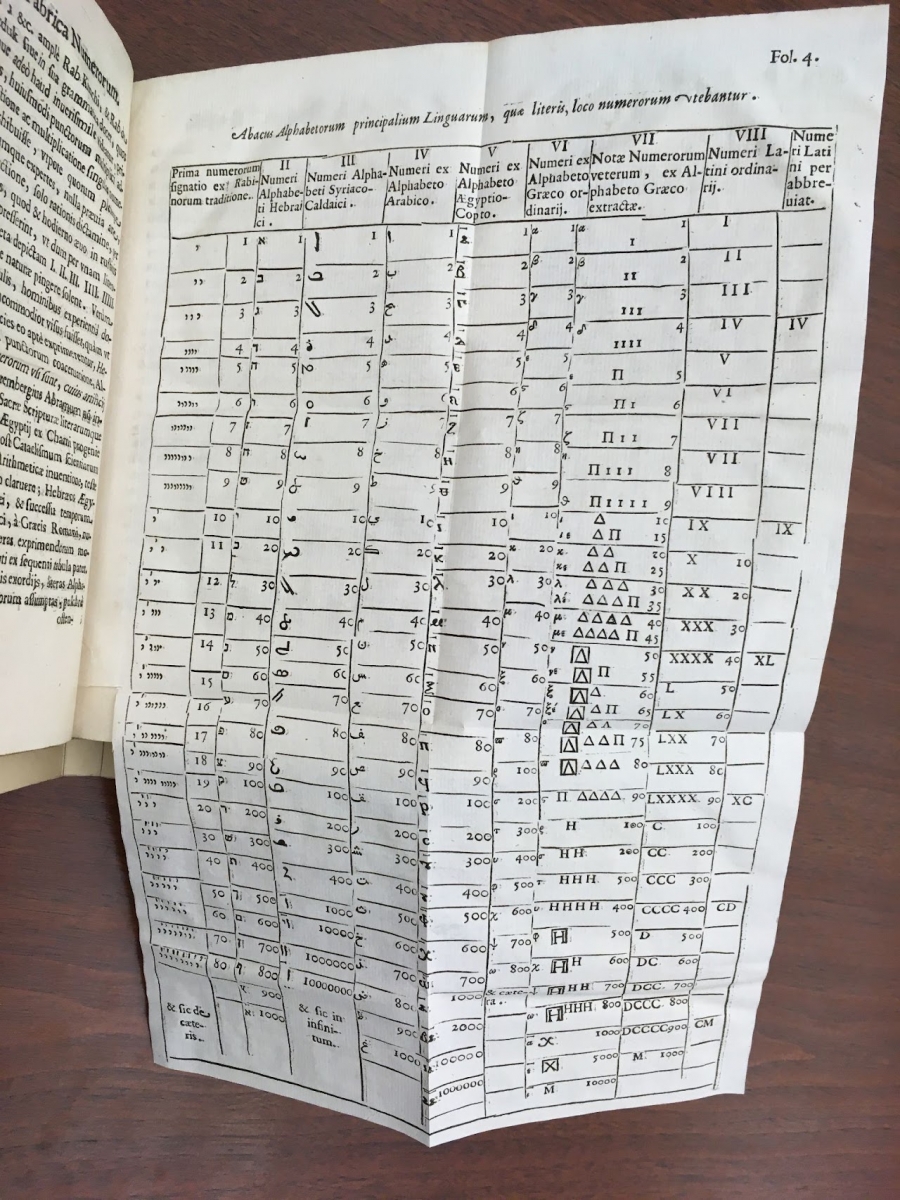
On page 70, Kircher confirmed all the additive properties of a 7x7 magic square:
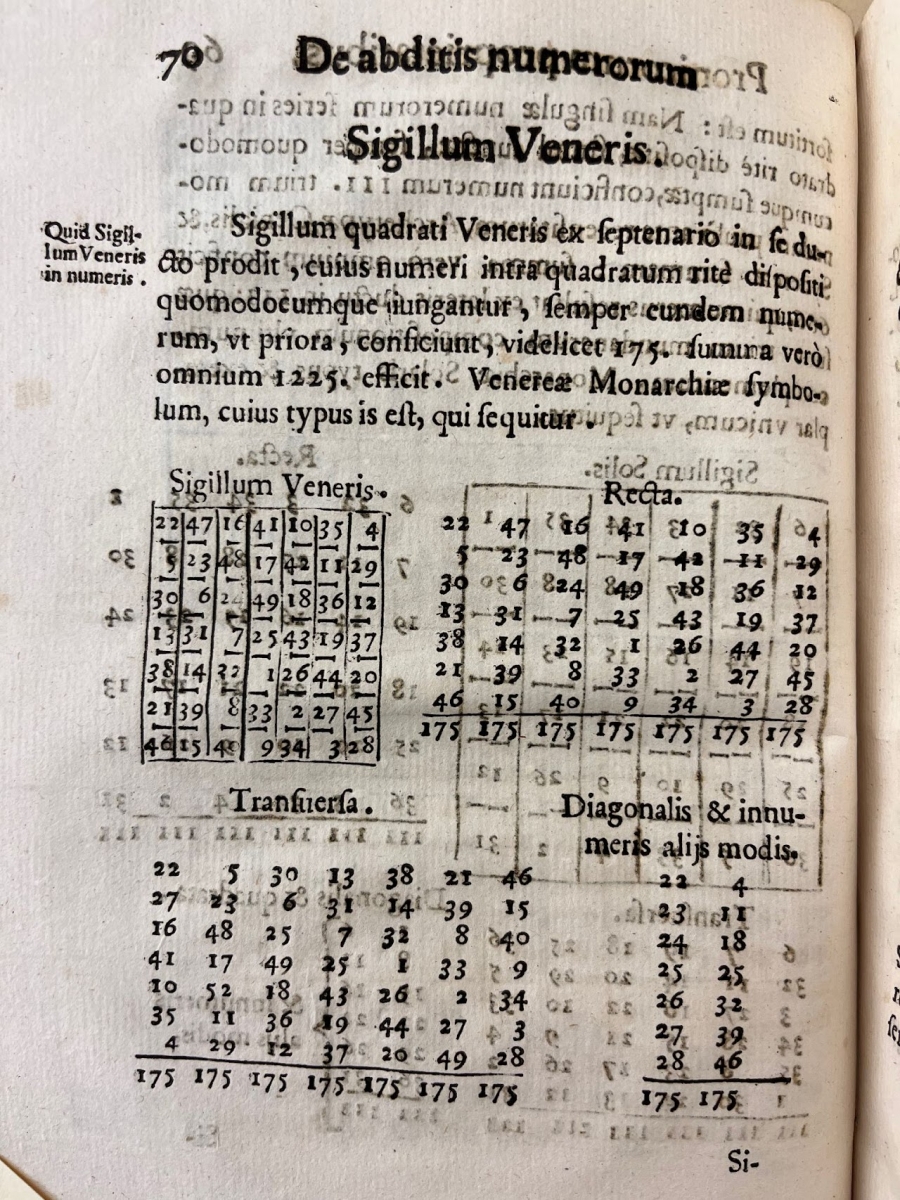
Kircher discussed arithmetic progressions and illustrated how to sum successive integers by pairing numbers for the cases of an odd and an even number of addends.
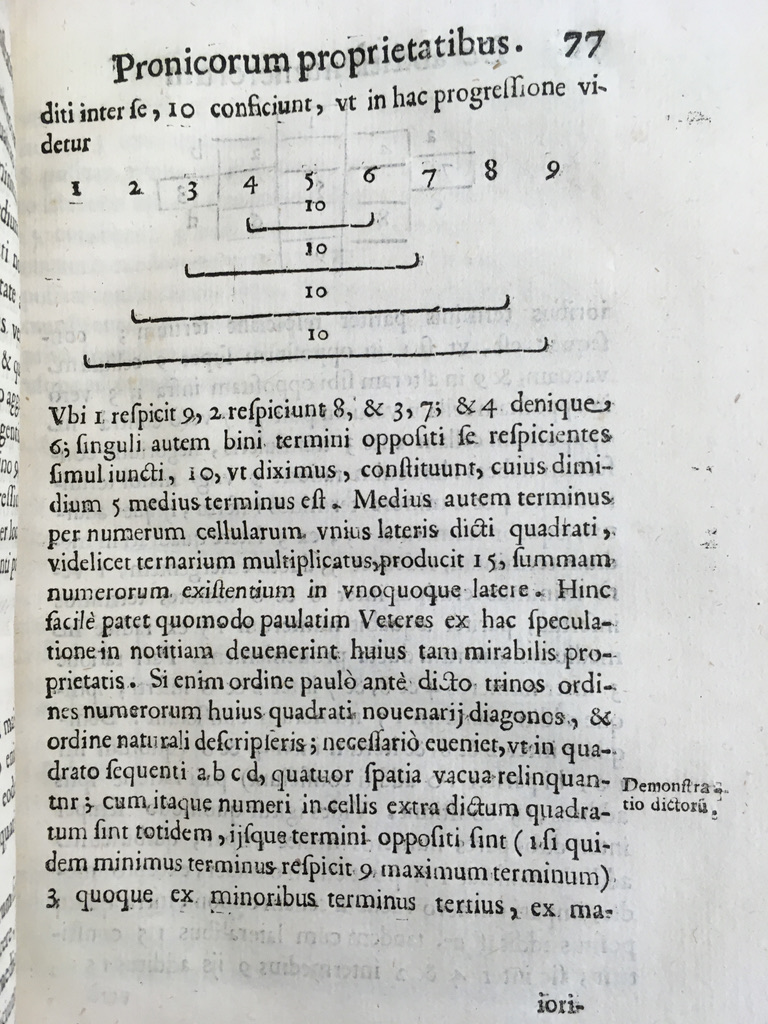
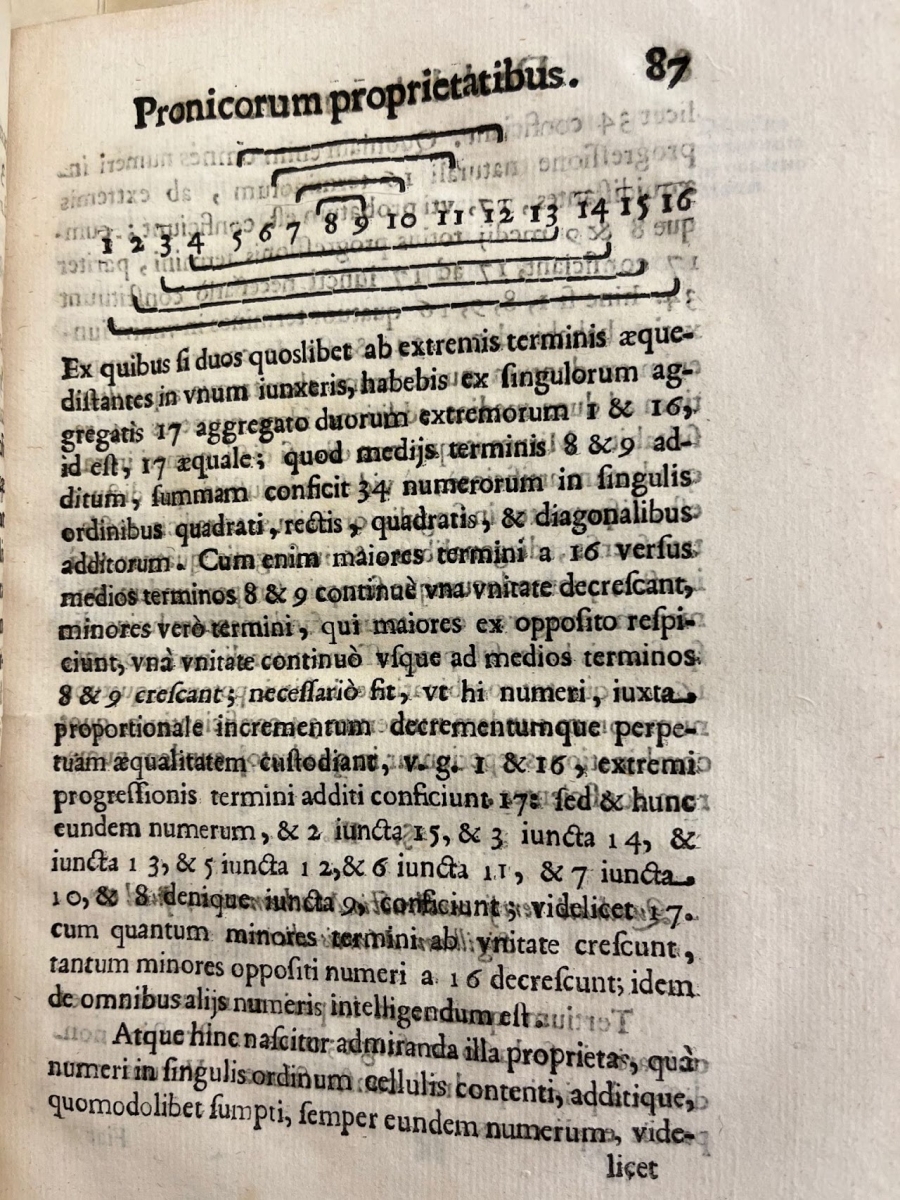
Kircher’s life and work continue to inspire interest in the 21st century, as evidenced by Buonanno [2014], Findlen [2004], Fletcher [2011], a permanent exhibit at the Museum of Jurassic Technology, and a 2001 conference at Stanford University.
The images above were obtained through the courtesy of the Department of Archives and Special Collections, William H. Hannon Library, Loyola Marymount University [SPEC COLL QA21.K58 1665]. A full digitization of the copy owned by Herzog August Library, Wolfenbüttel, is available via the Wolfenbütteler Digitalen Bibliothek project.
References
Buonanno, Roberto. 2014. The Stars of Galileo Galilei and the Universal Knowledge of Athanasius Kircher. Translated by Roberto Buonanno and Giuliana Giobbi. Cham, Switzerland: Springer.
Duignan, Brian et al. 2023. Athanasius Kircher. Encyclopedia Britannica. Last modified 26 April 2023.
Findlen, Paula, ed. 2004. Athanasius Kircher: The Last Man Who Knew Everything. New York: Routledge.
Fletcher, John Edward. 2011. A Study of the Life and Works of Athanasius Kircher, ‘Germanus Incredibilis’: With a Selection of His Unpublished Correspondence and an Annotated Translation of His Autobiography. Leiden: Brill.
Merrill, Brian L. 1989. Athanasius Kircher (1602–1680): Jesuit Scholar: An Exhibition of His Works in the Harold B. Lee Library Collections at Brigham Young University. Provo, UT: Friends of the Brigham Young University Library.
The Museum of Jurassic Technology. n.d. Athanaseus Kircher, S. J. 1602–1680. Permanent exhibit, Culver City, CA. Accessed June 21, 2023.
Stanford University. 2001. Baroque Imagery: The World of Athanasius Kircher, S. J. (1602–80). Conference, Palo Alto, CA, 27–28 April 2001. Accessed June 21, 2023.
Acknowledgment
The authors would like to thank Cynthia Becht, Head of the Department of Archives and Special Collections at the William H. Hannon Library, for her encouragement and assistance as they prepared this article.
[1] Many of these are housed in the archives of the Pontifical Gregorian University in Rome.
Jacqueline M Dewar (Loyola Marymount University) and Sarah J Greenwald (Appalachian State University), "Mathematical Treasure: Kircher’s Arithmologia," Convergence (June 2023)




